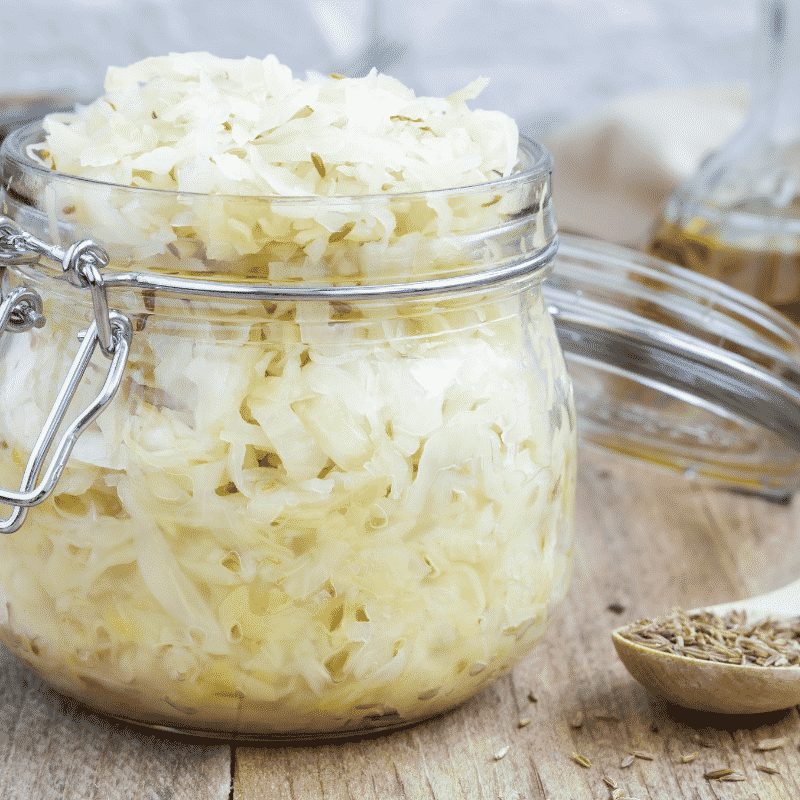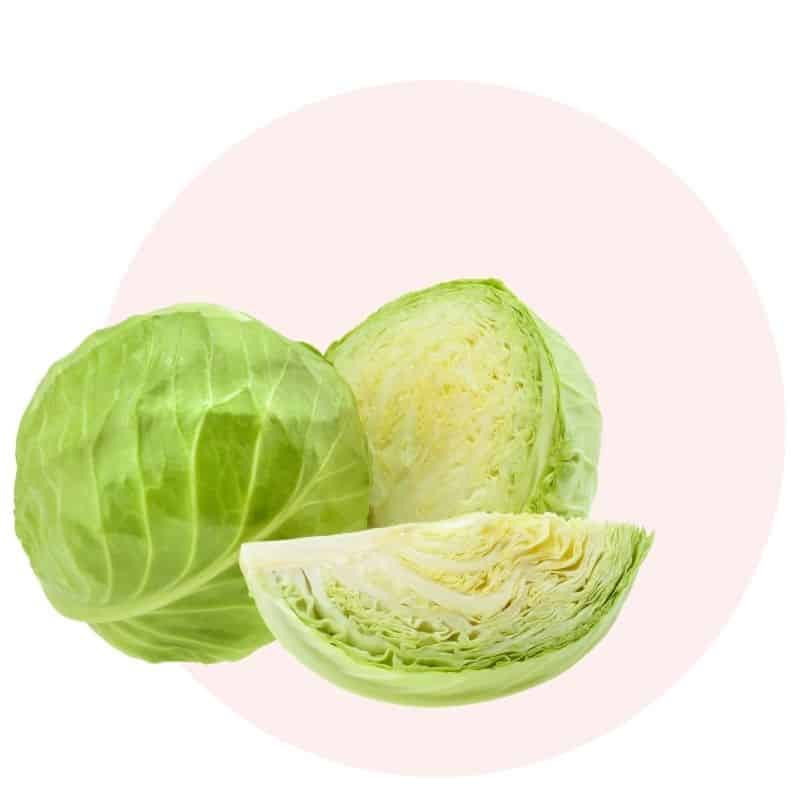
how to make sauerkraut

meet the ferment*…
history: Sauerkraut is thought to have originated in China, where they originally fermented shredded cabbage in rice wine. The preservation technique was later brought over to Germany, gaining its German name of sauerkraut ‘sour cabbage’.
what is it? Lacto-fermented cabbage
flavour profile: Fizzy and tangy with a crunch
Traditional German sauerkraut switches out rice wine in exchange for salt and is made with finely sliced cabbage fermented by lacto-fermentation. Laco-fermentation has been used for centuries to preserve vegetables. Beneficial bacteria (lactobacillus) present on the surface of the cabbage converts the sugars into lactic acid (once submerged in brine), inhibiting the growth of harmful bacteria.
ingredients
1 head of cabbage (green or red)
2% of cabbage weight in sea salt
1 tbsp fennel seeds (optional)
equipment
(included in our All in One Fermentation Kit)
1L jar
burping lid
weight (optional)
other equipment
chopping board
knife
mixing bowl

method
- Wash your jar in hot soapy water, then place it in the oven at 100°C for 15-20 mins to sterilise it, then leave to cool.
- Remove the outer leaves of the cabbage, if you’re not using a weight, set a cabbage leaf aside. Slice into quarters and remove the hearts. Finely slice the quarters into thin ribbons.
- Place your mixing bowl on a scale and zero the scale. Place the sliced cabbage into the mixing bowl and measure its weight. Calculate 2% of that weight (by multiplying by 0.02) and measure out the result in salt. Sprinkle the weighed-out salt over the cabbage, and add the fennel seeds. Using your hands, begin to squeeze the cabbage, massage for 5-10 minutes. The salt will draw water out of the cabbage creating its own brine. Allow the mixture to sit for 30 mins.
- Pack the cabbage into the 1L jar, being sure to add in all the cabbage’s juices, then pack down the contents by compressing the reserved cabbage leaf over the top, or by using the weight. Ensure you’re applying enough pressure so that the brine covers the shredded cabbage completely.
- Cover the jar with the burping lid and let it sit out on your countertop at room temperature, out of direct sunlight. After 24 hours, press down the cabbage again using the weight or leaf to ensure that cabbage is submerged beneath the level of brine. Start to taste test after 7 days. Once the sauerkraut has reached your desired tanginess, replace the burping lid with the screw top lid, securely cover and place it into the fridge. We like ours around day 14, it’s just the perfect level of tang!
storage
Sauerkraut can be stored in the fridge for at least 4 months.
“gaahhh” confused? need help?
By weighing the vegetables down and keeping them submerged below the brine, you create an anaerobic (oxygen free) environment. As moulds need oxygen to grow, this simple measure decreases the chance of mould growth forming.
If your cabbage was a little dry going into the recipe, or you weren’t fermenting a large quantity of vegetable matter at the start, this can happen. If after a couple days you’re worried that mould might start growing, just whisk together a little 2% brine (100ml of water and 2g of salt) and pour only as much as you need over top of your vegetables in order to keep them out of contact with air. Continue fermenting as normal from there.
Fermentation is a continual process and the flavours will develop over time. We recommend a taste test daily from day 7. Once the sauerkraut has reached your desired level of tanginess it’s time to move into the fridge.
It’s possible your sauerkraut fermented in a room that was too hot. Higher temperatures can lead to the bacteria becoming a bit overactive, breaking down the structure of the vegetables. That doesn’t mean its unsafe to eat by any means, just not the most pleasant.
Unfortunately, there’s no way to bring a mushy ferment back, so it’s best to start over and try again. Try fermenting in a cooler corner of your kitchen, in a well-ventilated area, or even in a cool cupboard. Beyond that, using tannic vegetable leaves (like blackcurrant or bay leaves) will cause your ferments to firm up as they mature. Feel free to line the top of your sauerkraut with some of those leaves instead of a reserved cabbage leaf to help form a seal and improve the texture of your ferment.
A good sauerkraut ferment will have a pleasant sour smell, with perhaps a faint note of sulphur, which comes from the cabbage. If it’s musty, smells like rotten eggs, or is putrid, something’s gone wrong.
Ferments can be contaminated in a number of different ways, however not all forms of mould are harmful – get confident knowing mould from yeast and when it’s time to call time on your pet.
A thin, white, crinkly film with no fuzz is often yeast. Specifically, kahm yeast. Kahm yeast can be skimmed from the surface and the ferment will still be safe to eat. Mould is raised and fuzzy, it can be black, white, green pink or blue. Should mould crop up, throw the whole ferment away.
Visit our recipe pages for inspiration.
*Fermented foods may not be suitable for everyone, for example, if you are immunocompromised. Speak to your medical professional if you have any concerns.
